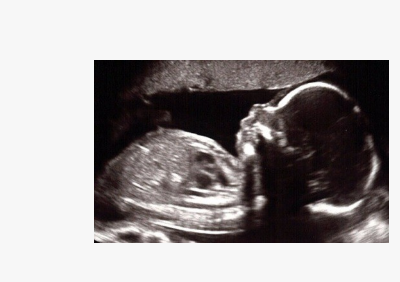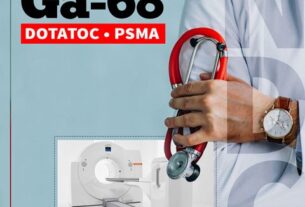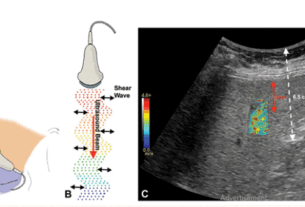Overview
What is a USG ANOMALY SCAN ?
An USG Anomaly scan, also known as a fetal anatomy scan or 20-week scan.
A USG Anomaly Scan is a detailed ultrasound examination performed during pregnancy, usually between 18 and 22 weeks of gestation. It is sometimes called a mid-pregnancy scan or level 2 ultrasound.
The purpose of this scan is to carefully examine the baby’s growth, anatomy, and overall development. It allows doctors to detect structural abnormalities or congenital conditions early and helps plan for the safest care during pregnancy, delivery, and after birth.
What does a USG ANOMALY SCAN diagnose?
A USG anomaly scan is a detailed ultrasound performed during the middle of pregnancy, usually around 20 weeks. It is a screening test that checks for major physical birth defects and helps ensure the baby is developing correctly.
Body parts: Looks at the baby’s developing head, face (for cleft lip), spine, heart, stomach, kidneys, and limbs to ensure they are forming as expected.
Growth and size: Measures the baby’s head, belly, and thigh bone to check if their size is on track for their gestational age.
Placenta and fluid: Checks the position of the placenta and confirms that there is a healthy amount of amniotic fluid around the baby.
Potential concerns: Identifies certain “markers” or signs that suggest an increased risk of specific conditions, including some genetic abnormalities.
Indications for a USG Anomaly Scan
A USG Anomaly Scan is recommended for:
Routine Pregnancy Check
Usually done between 18–22 weeks for all pregnant women.
Checking Baby’s Growth and Development
To ensure the baby’s organs and body parts are developing normally.
Previous Pregnancy Complications
If there were birth defects, miscarriages, or other issues in earlier pregnancies.
Family or Genetic History
If there is a history of congenital conditions in the family.
Abnormal Findings in Earlier Scans
If the first-trimester scan or other tests show something unusual.
Maternal Health Concerns
Conditions like diabetes, high blood pressure, or infections may require detailed monitoring of the baby.
Test Details
Who performs a USG ANOMALY SCAN?
A USG Anomaly Scan is usually performed by a trained radiologist or an experienced sonographer/ultrasound technician.
Radiologist: A doctor specialized in interpreting medical images. They ensure the scan captures all important details and can identify any abnormalities.
Sonographer/Ultrasound Technician: A trained professional who operates the ultrasound machine and captures clear images of the baby.
After the scan, the radiologist reviews the images and prepares a report, which is then discussed with your obstetrician or gynecologist.
What happens before a USG ANOMALY SCAN?
Before a USG Anomaly Scan
- Drink Water (if instructed)
- Sometimes, you may be asked to drink water and keep a full bladder.
- A full bladder helps the technician get clearer images of the baby.
- Wear Comfortable Clothing
- Wear clothes that allow easy access to your belly.
3.Bring Previous Reports
- Bring any earlier scans, test results, or medical reports for comparison.
4.Avoid Lotions or Oils
- Try not to apply lotions or oils on your belly on the day of the scan.
5.Relax and Ask Questions
- The scan is painless and safe.
- You can ask the technician or doctor any questions before it begins.
What happens during a USG ANOMALY SCAN?
During a USG Anomaly Scan
1.You lie down comfortably
- Usually on your back with your belly exposed.
2.A warm gel is applied
- The technician spreads a water-based gel on your belly.
- This helps the ultrasound probe move smoothly and creates clearer images.
3.The ultrasound probe is moved over your belly
- The probe looks like a small wand.
- It sends sound waves to create images of your baby on a monitor.
- You may feel slight pressure, but it does not hurt.
4.You may be asked to change positions or hold still
- Sometimes raising your arms or turning slightly helps get better images.
5.The scan usually takes 20–30 minutes
- The technician carefully examines all major organs and body parts of your baby.
How long does a USG ANOMALY SCAN take?
A USG Anomaly Scan usually takes about 20 to 45 minutes.
- The exact time can vary depending on your baby’s position, movement, and how clearly the organs can be seen.
- If the baby is moving a lot or lying in a position that makes it hard to get clear images, the technician may take a little extra time.
What happens after USG ANOMALY SCAN ?
1.After a USG Anomaly Scan You can clean up and get dressed
- The gel used during the scan is wiped off, and you can return to your normal routine right away.
2.You can eat and drink normally
- There are no restrictions after the scan.
3.The radiologist reviews the images
- A specialist doctor (radiologist) carefully studies the pictures of your baby’s organs and growth.
4.You’ll receive a report
- The scan report is prepared and sent to your gynecologist or obstetrician, who will explain the results to you.
5.Further steps (if needed)
- In most cases, everything is normal.
- If anything unusual is seen, you
The USG (ultrasound) anomaly scan, also known as the 20-week anatomy scan, offers many benefits for expectant parents and their healthcare team. This detailed and comprehensive examination of the baby’s development provides vital information for managing the pregnancy and preparing for birth.
- Provides peace of mind and reassurance
For many parents, seeing their baby’s anatomy developing normally can greatly reduce anxiety. The scan is a profound experience that strengthens the emotional bond between parents and their unborn child.
- Detects major birth defects and abnormalities
The scan is highly effective at identifying structural defects and congenital anomalies in the baby’s organs and body, including:
- Brain and spinal cord: Checks for issues like spina bifida.
- Heart: Examines the structure and function of the heart. Face: Looks for a cleft lip, though a cleft palate may be difficult to see.
- Abdomen: Checks for abdominal wall defects where organs form outside the body.
- Limbs: Assesses the formation of arms, legs, hands, and feet.
- Kidneys and bladder: Confirms the kidneys are present and functioning.
- Enables early planning for medical intervention
If a significant anomaly is detected, the medical team and parents can prepare for the baby’s special care.
- Specialized care: It allows time to arrange for specialized neonatal care or surgery if needed after birth.
- Preparation: Parents and medical teams can prepare for conditions that may require immediate attention upon delivery
- Informed decisions: Parents have time to gather information, undergo counseling, and make informed decisions about the course of the pregnancy.
- Confirms healthy fetal growth
The sonographer takes measurements of the baby’s head, abdomen, and thigh bone to ensure growth is on track for the gestational age. It also checks the amount of amniotic fluid and the placenta’s position, helping to identify potential complications.
- Identifies soft markers for chromosomal issues
The scan can reveal “soft markers,” which are subtle signs that can indicate a higher risk of chromosomal abnormalities like Down syndrome. While these markers don’t confirm a diagnosis, they can prompt further, more specific testing if necessary.
Important considerations
It’s crucial to understand that while the anomaly scan is highly accurate for detecting many conditions, it is not 100% foolproof. Some issues may not be visible, especially if they are very subtle, develop later in the pregnancy, or are genetic rather than structural. The scan cannot detect conditions like autism or cerebral palsy.
What are the risks of a USG Anomaly Scan?
Risks of a USG Anomaly Scan
- No known risks:
Ultrasound scans are considered very safe for both the mother and the baby. They use sound waves, not radiation, so there’s no exposure to harmful rays.
Mild discomfort:
You might feel a bit of pressure from the probe or some discomfort if your bladder is full, but it’s temporary.
Emotional stress:
Sometimes, if an unexpected finding appears, it can cause worry or anxiety until the doctor explains it in detail.
A Note from North City Diagnostic
The uncertainty of not knowing how your baby is developing can make any parent-to-be anxious. A USG Anomaly Scan can provide reassurance and important answers. This safe, painless ultrasound test helps your doctor check your baby’s growth, organs, and overall well-being. It’s an essential part of prenatal care that ensures both you and your baby are healthy and on the right track.





